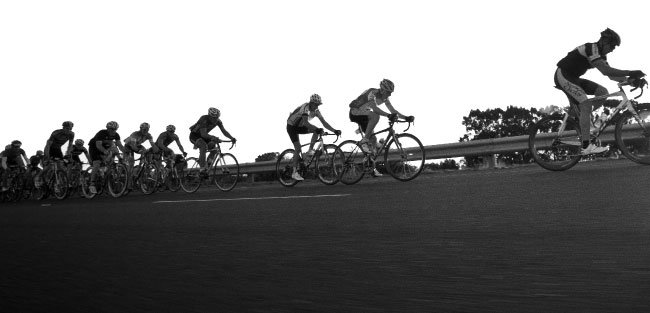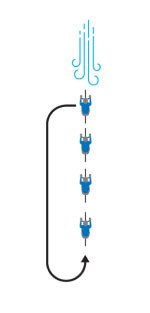Expert Tips: Beat The Wind!
Become an expert and blow the other riders away in blustery weather.
Become an expert and blow the other riders away in blustery weather. – By Christine Bucher

Headwind
Blows opposite to the direction you’re moving; you’ll feel like you’re working extra hard and getting nowhere.
IF YOU’RE ALONE Make your body small, elbows in, hands in the drops, head in line with your torso, which you’ll want to position as close to parallel to the top tube as you comfortably can. Shift into a slightly easier gear and relax your grip.
IN A GROUP
Draft. Take turns at the front of a paceline; even short pulls of a few pedal strokes help the communal effort. As long as you are within a bike’s length of the rider in front of you, the effort is easier. Closer is better, but don’t overlap wheels.[/box]
Crosswind
Hits you from the side; you’ll struggle to stay on your line.
IF YOU’RE ALONE
Note the direction the wind is blowing (you’ll notice trees swaying or feel it on your face) and lean slightly into the wind.
IN A GROUP Try an echelon. In this angled formation, riders align themselves on the protected side of a leader. If the wind comes from the left, for example, the second rider will stay behind and slightly to the right of the leader, and following riders will fan out behind him accordingly. This formation can fan out and is best done in small groups to avoid interrupting traffic.[/box]
Tailwind
Blows in the direction you’re headed, pushing you along. You’ll feel worthy of rainbow stripes.
IF YOU’RE ALONE Enjoy it while it lasts: your route may circle back into a headwind. If you’re trying to gain speed, tuck your body into an aero position, which will help you knife through the air.
IN A GROUP Time for a sprint. High speeds create the illusion of bigger gaps between riders, so use that to your advantage and make a move. But be careful; a tailwind can also fool you into thinking you’re having a great day. Avoid taking unnecessary risks that can lead to careless mistakes and crashes. [/box]
ROUTE PLAN TIPS: Open roads along coastlines and ones that cross empty fields are usually windiest. Wooded or residential areas are more protected.




